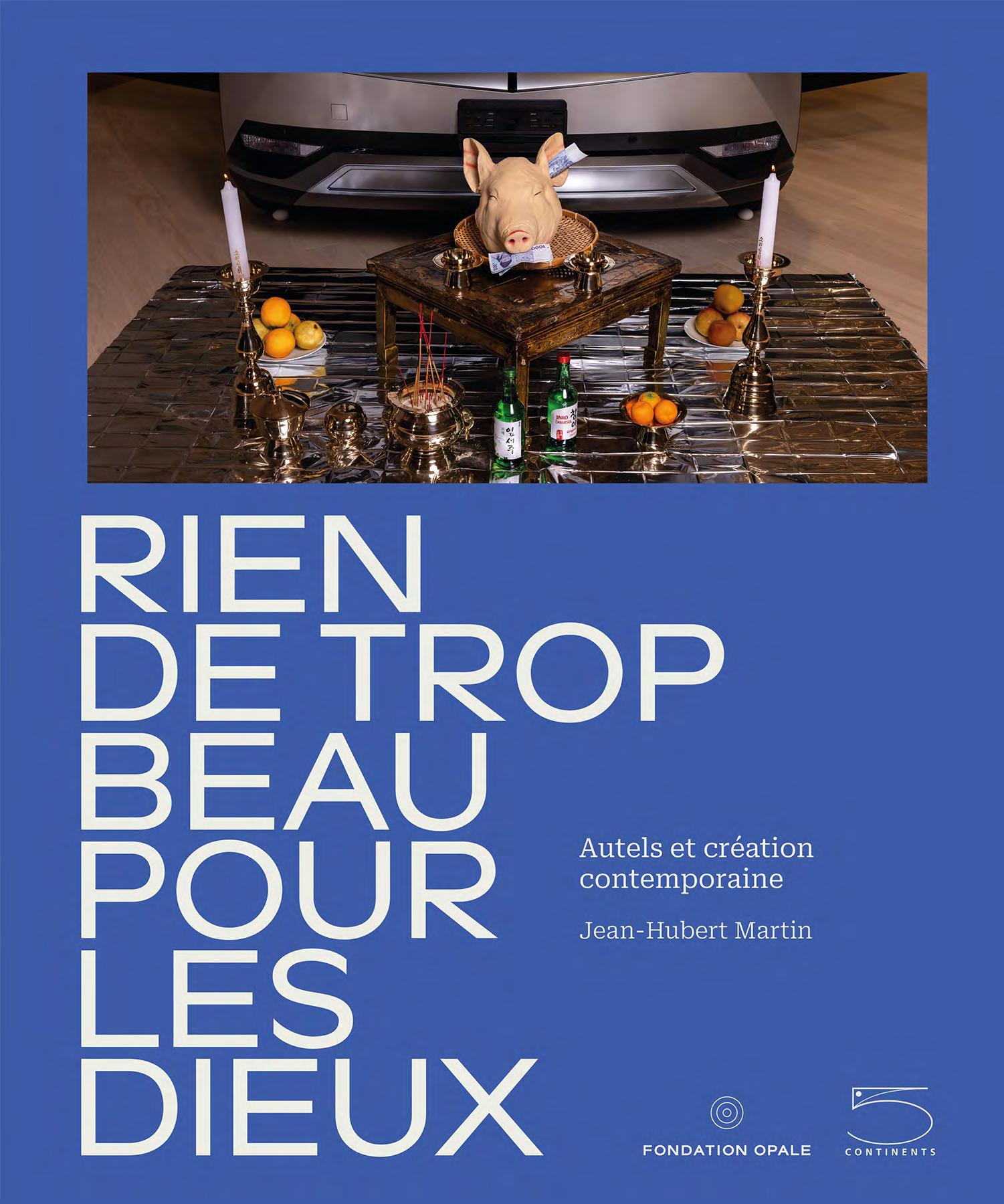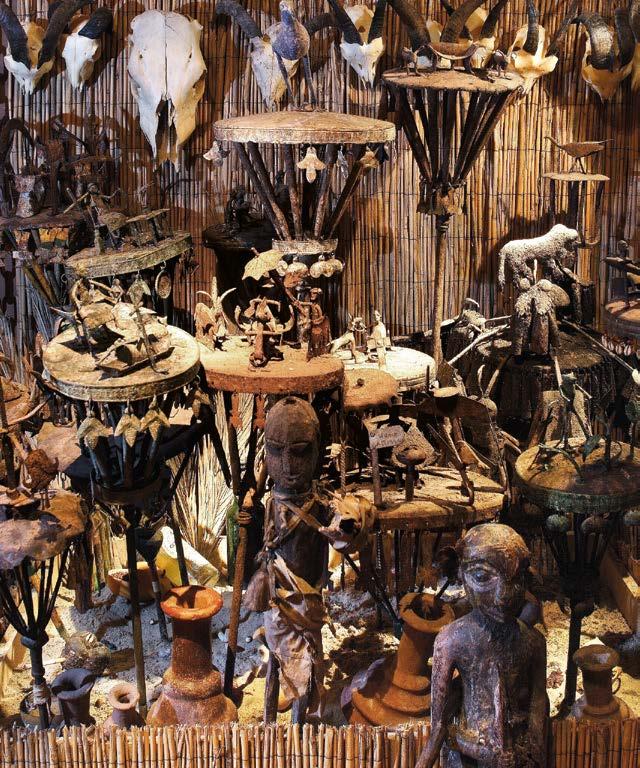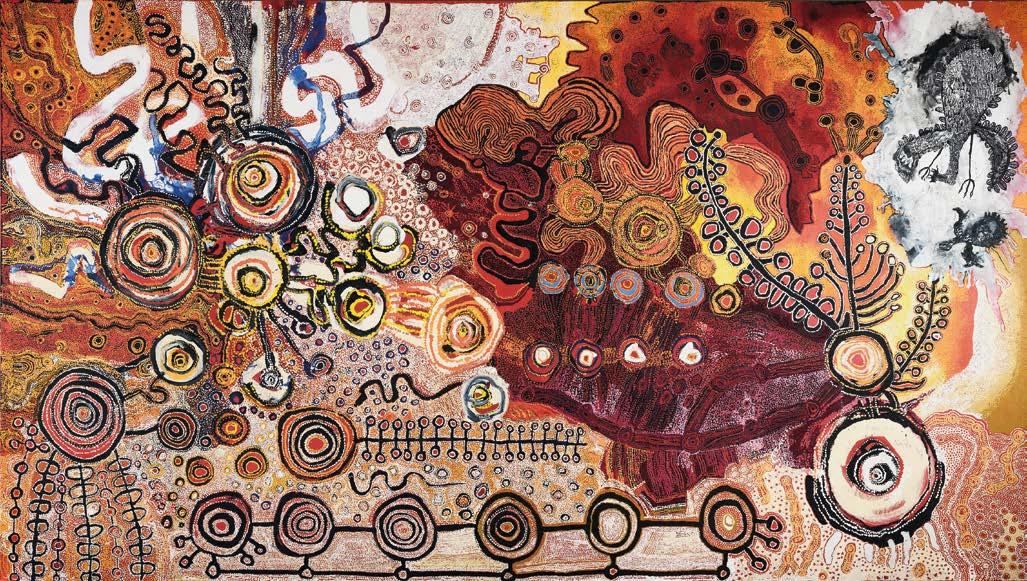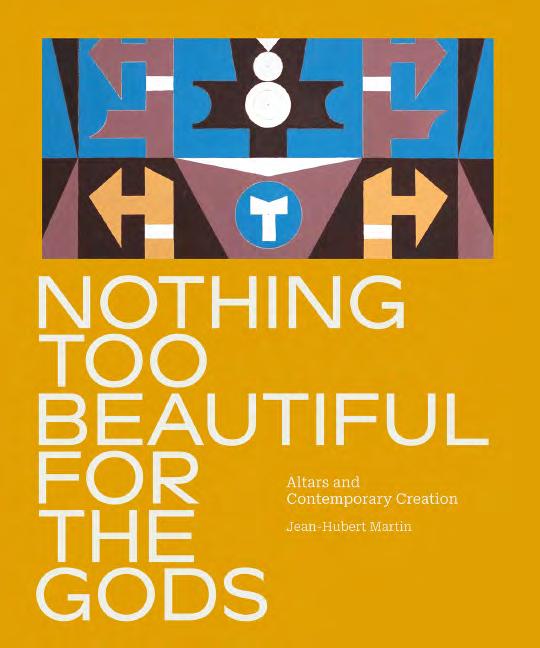

AFRIQUE AFRICA
AUTEL IBEJI / IBEJI ALTAR
CRUCIFIX BOCIO
DEIDI VON SCHAEWEN
AUTEL ASEN / ASEN ALTAR
AUTEL DE MAMI WATA / MAMI WATA ALTAR
CYPRIEN TOKOUDAGBA
ROMUALD HAZOUMÈ
EL ANATSUI
YOUNÈS RAHMOUN
HERVÉ YOUMBI
JEAN-JACQUES EFIAIMBELO
Autel des ancêtres, culte ancestral Abomey et Ouidah, Bénin
Altar of ancestors, ancestral cult Abomey and Ouidah, Benin


Une fois que les ancêtres ont terminé leur repas et écouté les inquiétudes de leurs proches, la femme la plus âgée de la famille asperge les asen d’une gorgée de bière avec sa bouche. Sur ce, elle dit au revoir à ses ancêtres. Abomey, Bénin
Once the ancestors have finished their meal and listened to the concerns of their loved ones, the eldest woman in the family sprinkles the asen with a mouthful of beer from her mouth. With that, she says goodbye to her ancestors. Abomey, Benin


AMÉRIQUE AMERICA
AUTEL MESA / MESA ALTAR
RICARDO LINARES GARCÍA
SANTOS MOTOAPOHUA DE LA TORRE
AUTEL KONGO ARBRE / KONGO TREE ALTAR
CULTE VAUDOU / VOODOO CULT
AUTEL DE QUIMBANDA / QUIMBANDA ALTAR
MESTRE DIDI
RUBEM VALENTIM
JOSÉ BEDIA
SANDRA VÁSQUEZ DE LA HORRA

Autel de Quimbanda, Brésil
Quimbanda altar, Brazil

Kauyumari, « Notre grand frère qui ne connaît pas son nom »). Il est en train d’appeler (en prière/chant), attendant l’arrivée des nuages qui apporteront la pluie. Au-dessus de lui, l’aigle chasse deux petits cerfs. Surmontant la tête de l’aigle principal, dans les carreaux centraux du tableau, une explosion de la célébration du monde naturel : écureuils, scorpions, fleurs aux arômes exquis et, du battement rapide des ailes de l’oiseau sacré, surgissent des micro-organismes, des insectes et des plantes, qui servent tous à nourrir le cerf. Dans le panneau vert à droite figurent deux oiseaux envoyés par l’aigle pour trouver de la nourriture. Au-dessus d’eux s’élève l’arbre Mayumbe en fleur, d’où tombent les bénédictions des fruits, et à ses pieds des offrandes votives de bougies, de fleurs et d’autres objets cérémoniels.
Dans la partie supérieure du tableau, dans le panneau de droite, le guide Mayumbe prend la forme de l’oiseau bleu qui annonce la présence du cerf pendant la chasse. Les deux animaux se battent, mais tout se termine par un jeu animé. Outre l’oiseau de Mayumbe, il y a un « Œil de Dieu », la bénédiction des quatre points cardinaux. Sur le côté, un panneau rouge couvert d’offrandes exprime la profonde dévotion des Huichol : des broderies, des citrouilles, un épi de maïs, un cercle de pouvoir et un objet qui guide l’apprentissage de l’art du tissage. À gauche de ce panneau, l’étoile blanche brillante qui a découvert la cachette de la divinité Tatewari, et à côté, dans le panneau supérieur gauche, un couple adresse une requête à la Mère Pluie au cours d’une cérémonie comportant des bougies et un récipient huichol utilisé pour brûler de l’encens. Le personnage de droite est vêtu en chaman.
Description transcrite à partir des explications de l’artiste à Chili Hawes
Kauyumari, ‘Our Big Brother who does not know his name’). He is shown calling out (in prayer/song), awaiting the arrival of clouds which will bring rain. Above him is the eagle hunting two small deer.
Above the head of the main eagle, in the central tiles of the painting, the celebration of the natural world explodes: squirrels, scorpions, flowers with exquisite aromas and, from the rapid beating of the sacred bird’s wings, microorganisms, insects, and plants emerge, all of which serve to feed the deer.
In the green panel to the right are two birds sent by the eagle to find food. Above them is the blossoming Mayumbe tree, from which the blessings of fruit fall, and at its feet are votive offerings of candles, flowers, and other ceremonial objects.
In the upper part of the painting, in the right-hand panel, the Mayumbe guide takes the form of the blue bird that announces the presence of the deer during the hunt. The two animals fight, but it all ends in a wild game. In addition to Mayumbe’s bird, there is an ‘Eye of God’, the blessing of the four cardinal points.
On the side, a red panel covered in offerings expresses the profound devotion of the Huichols: embroidery, pumpkins, a stalk of corn, a circle of power, and an object that guides the learning of the art of weaving.
To the left of this panel is the white shining star that discovered the hiding place of the deity Tatewari and, next to it, in the upper-left panel, a couple make a request to Mother Rain in a ceremony involving candles and a Huichol vessel used to burn incense. The figure on the right is formally dressed as a shaman.
Description transcribed from the artist’s explanations to Chili Hawes


ASIE ASIA
YONI-LINGAM
AUTEL DE BORD DE ROUTE / WAYSIDE ALTAR
ONATTAPPAN
SANCTUAIRE D’AYANAR / AYANAR SHRINE
DEIDI VON SCHAEWEN
AUTEL VIDÉO / VIDEO ALTAR
AUTEL À LA DÉESSE KALI / ALTAR TO THE GODDESS KALI
AUTEL TIBÉTAIN / TIBETAN ALTAR
AUTEL JARDIN DE FLEURS / FLOWER GARDEN ALTAR
AUTEL GENGIS KHAN / GENGHIS KHAN ALTAR
SAODAT ISMAILOVA
KAZUO SHIRAGA
AUTEL AUTOMOBILE / CAR ALTAR
KIMSOOJA
Cérémonie de prière et offrande à une voiture, Séoul, Corée du Sud, 2000
Ceremony of prayer and offering to a car, Seoul, South Korea, 2000




EUROPE
MARINA ABRAMOVIC ´
HERMANN NITSCH
CHRISTIAN BOLTANSKI
ART ORIENTÉ OBJET (MARION LAVAL-JEANTET & BENOÎT MANGIN)

Art Orienté Objet, Tambour 46, Le Rituel du serpent, 2014
Art Orienté Objet, Drum 46, The Serpent Ritual, 2014


Tambour 18, Résilience, 2013
Tambour votif pour la reconstitution de la forêt primaire et la malédiction des coupeurs de bois
Drum 18, Resilience, 2013
Votive drum for the reconstitution of the primary forest and the curse on woodcutters
Tambour 30, No Man’s Land, 2013
Ce tambour établit un parallèle entre les espaces naturels sacrés que deviennent les no man’s lands terrestres et le no man’s land de l’invisible où flottent des esprits susceptibles d’intervenir dans le monde des vivants par le truchement des chamans. Ce tambour dit le respect dû aux esprits supérieurs
Drum 30, No Man’s Land, 2013
This drum draws a parallel between the sacred natural spaces that have become terrestrial no man’s lands and the no man’s land of the invisible, where spirits float that can intervene in the world of the living through the intermediary of shamans. This drum expresses the respect due to higher spirits

OCÉANIE OCEANIA
MICHAEL PANGATA, MORRIS WAKO,
CLIFFY TOMMY & MARTIN MPETYAN HAGAN
NARRITJIN MAYMURU
JIMMY NJIMINJUMA
CLIFFORD POSSUM TJAPALTJARRI & DINNY NOLAN TJAMPITJINPA
WITJITI GEORGE, KEITH STEVENS, TAYLOR COOPER, ILUWANTI KEN, SYLVIA KEN, YARITJI YOUNG, NYUNMITI BURTON, LEAH BRADY, TERESA BAKER, IMATJALA POLLARD, FREDA BRADY, MARINGKA TUNKIN & TANYA BRADY
GEORGE NUKU
l’œuvre
Iluwanti Ken en train de peindre
Ngura Pulka, Tjukurpa Pulka, 2022, APY Lands, Australie (détail)
Iluwanti Ken painting the work Ngura Pulka, Tjukurpa Pulka, 2022, APY Lands, Australia (detail)



Ngura Pulka, Tjukurpa Pulka, 2022
Acrylique sur toile / Acrylic on canvas
300 × 500 cm
Collection Bérengère Primat, courtesy of Fondation Opale, Suisse / Switzerland

